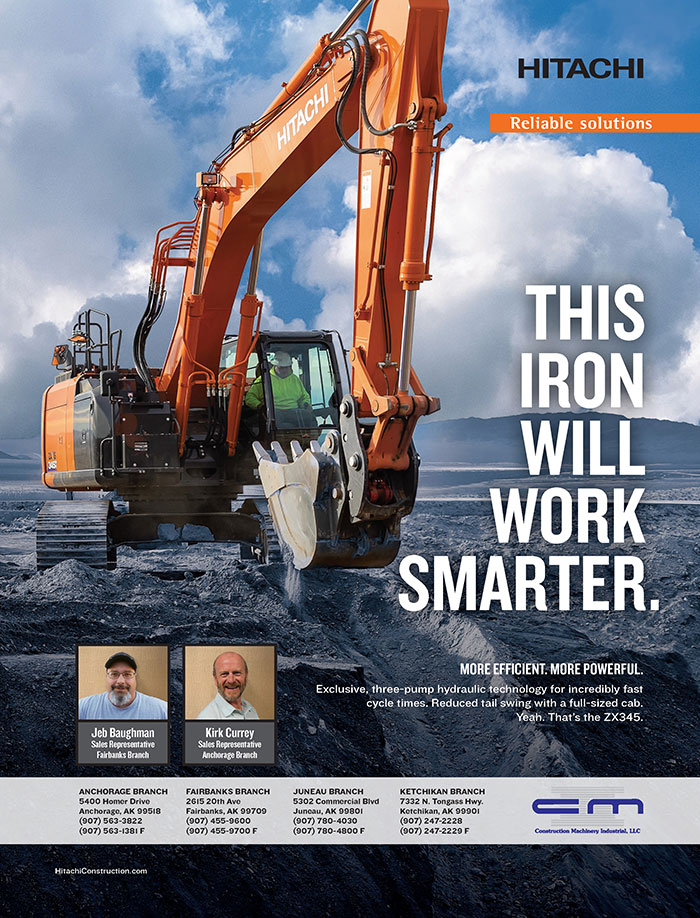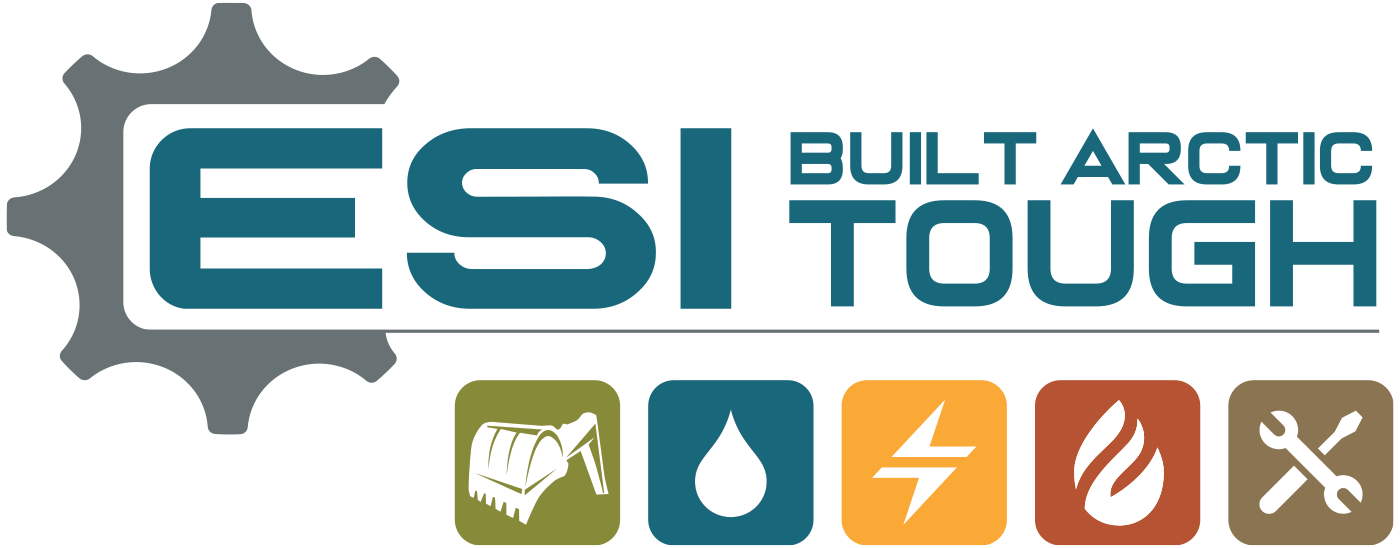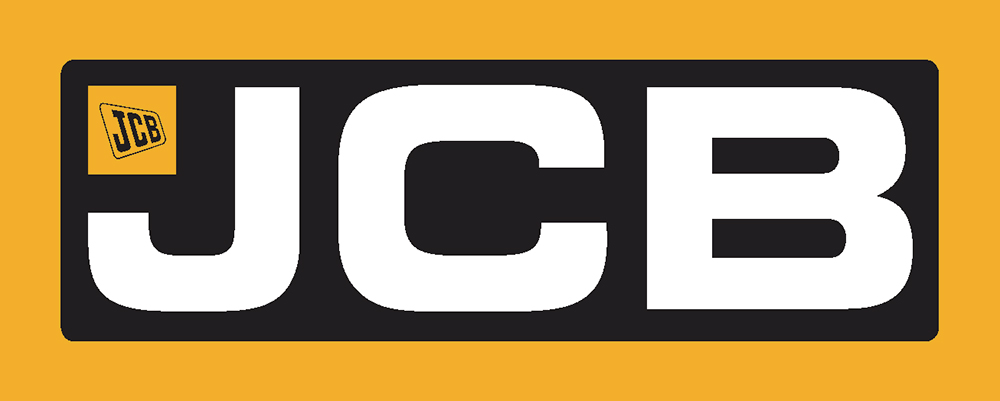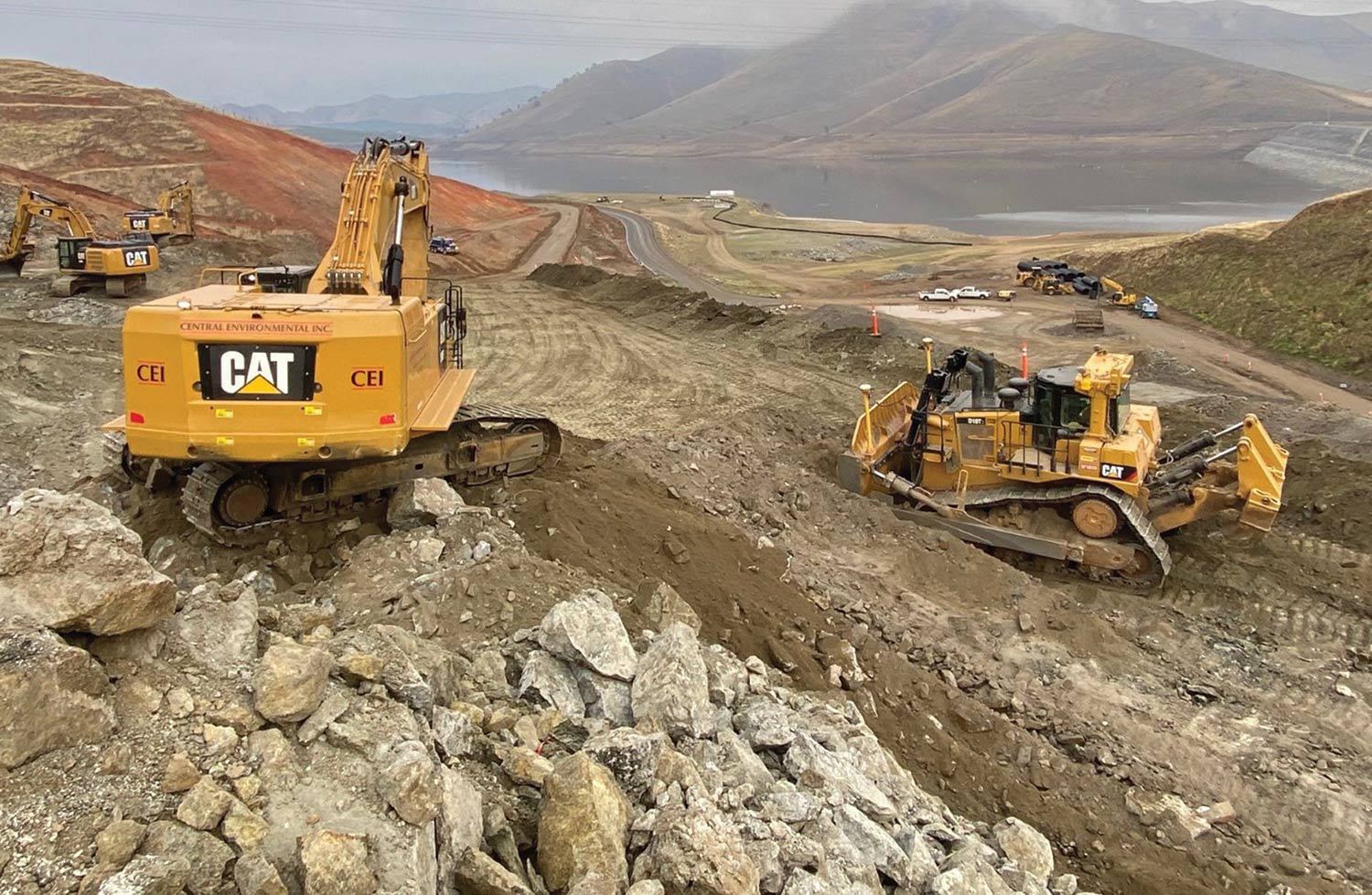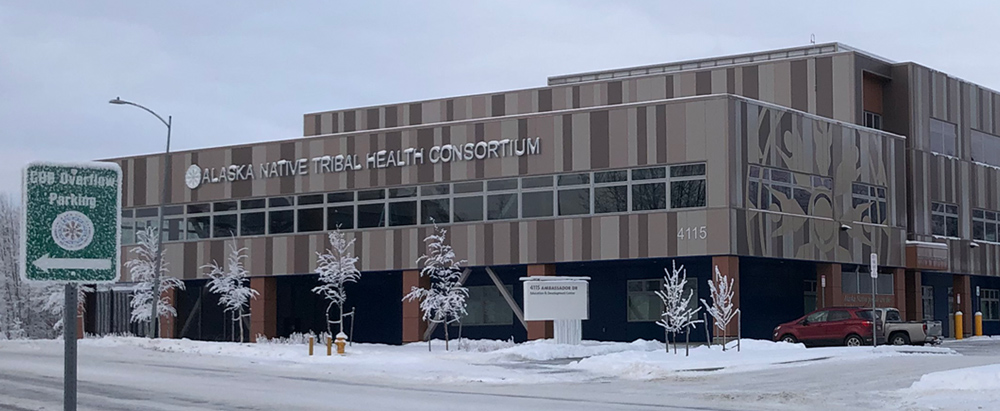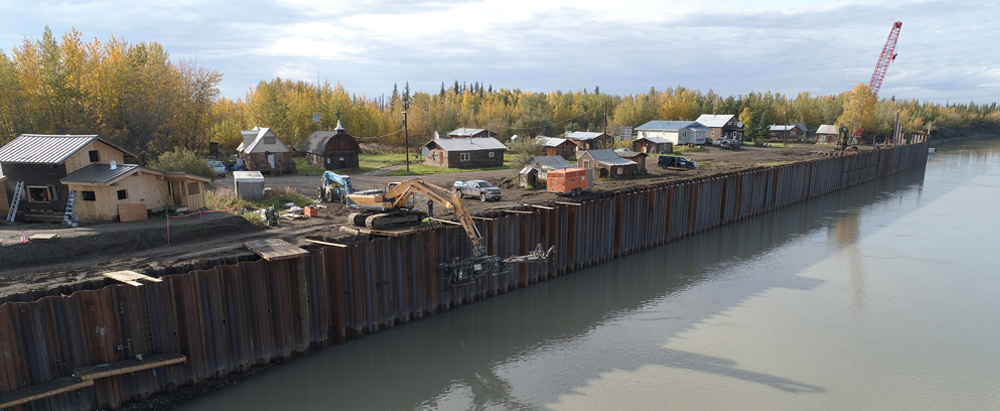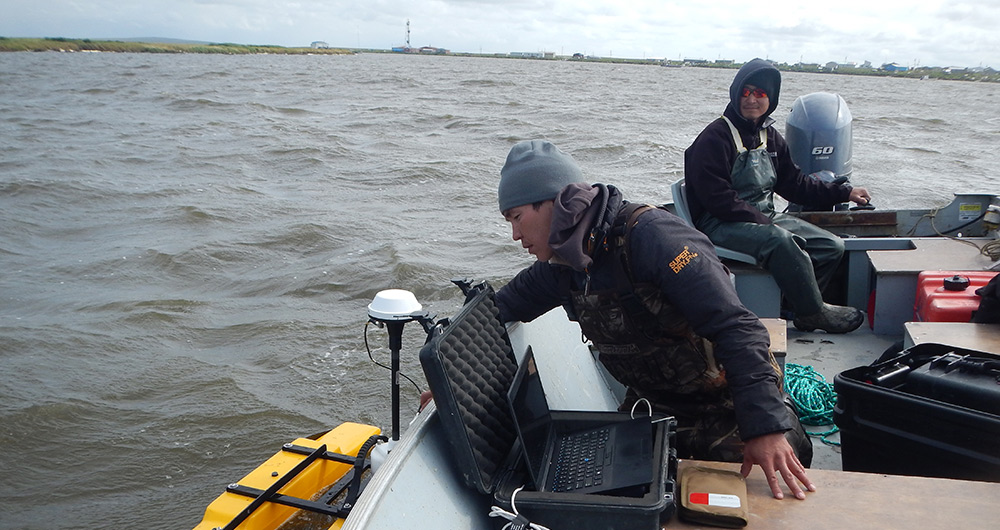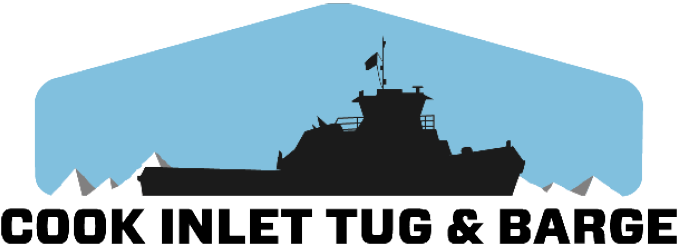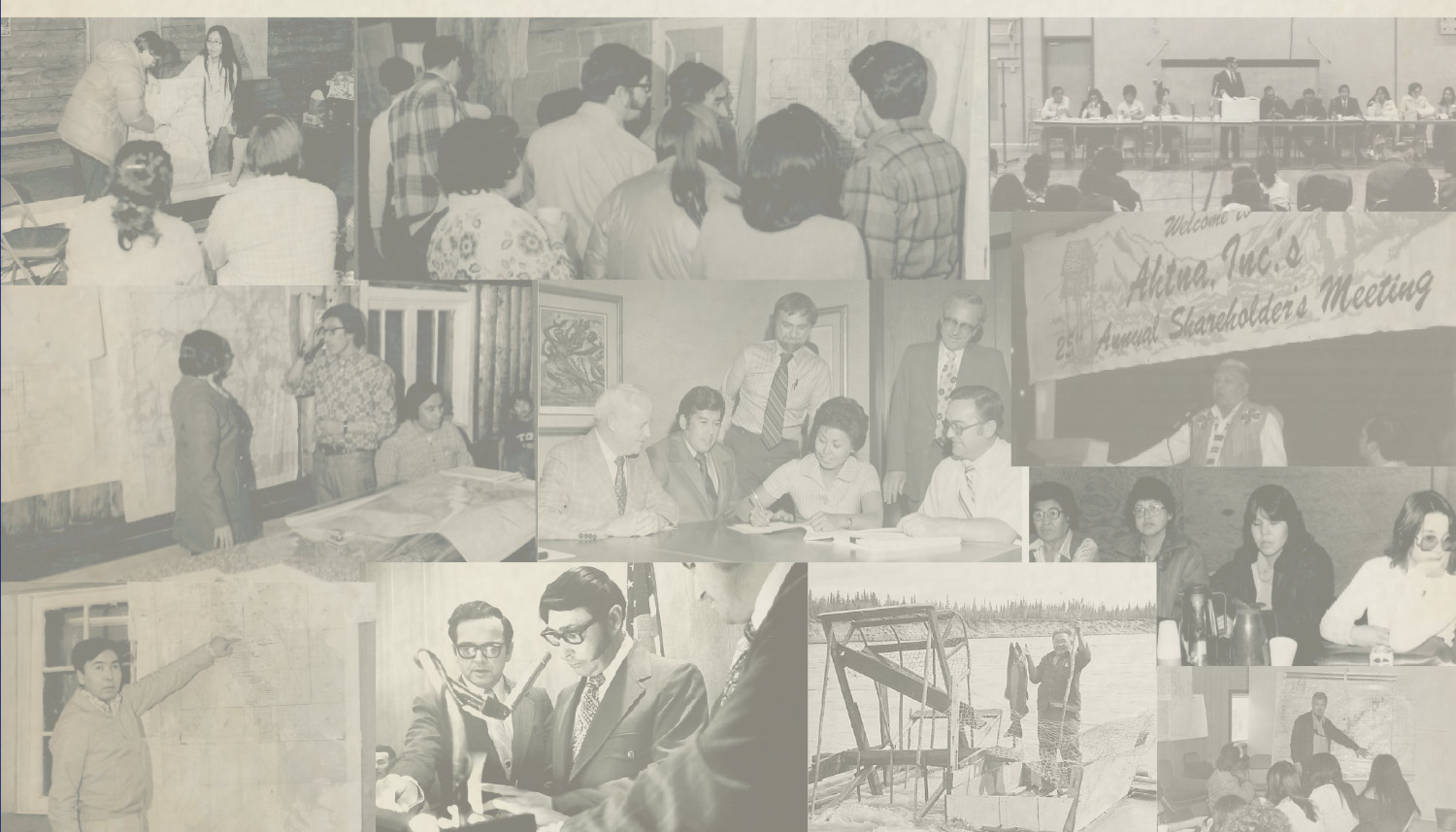
Contents
Features
The Signs, They Are A-Changing
By Alexandra Kay
Charging Ahead to Reduced Emissions
By Rachael Kvapil
By Vanessa Orr
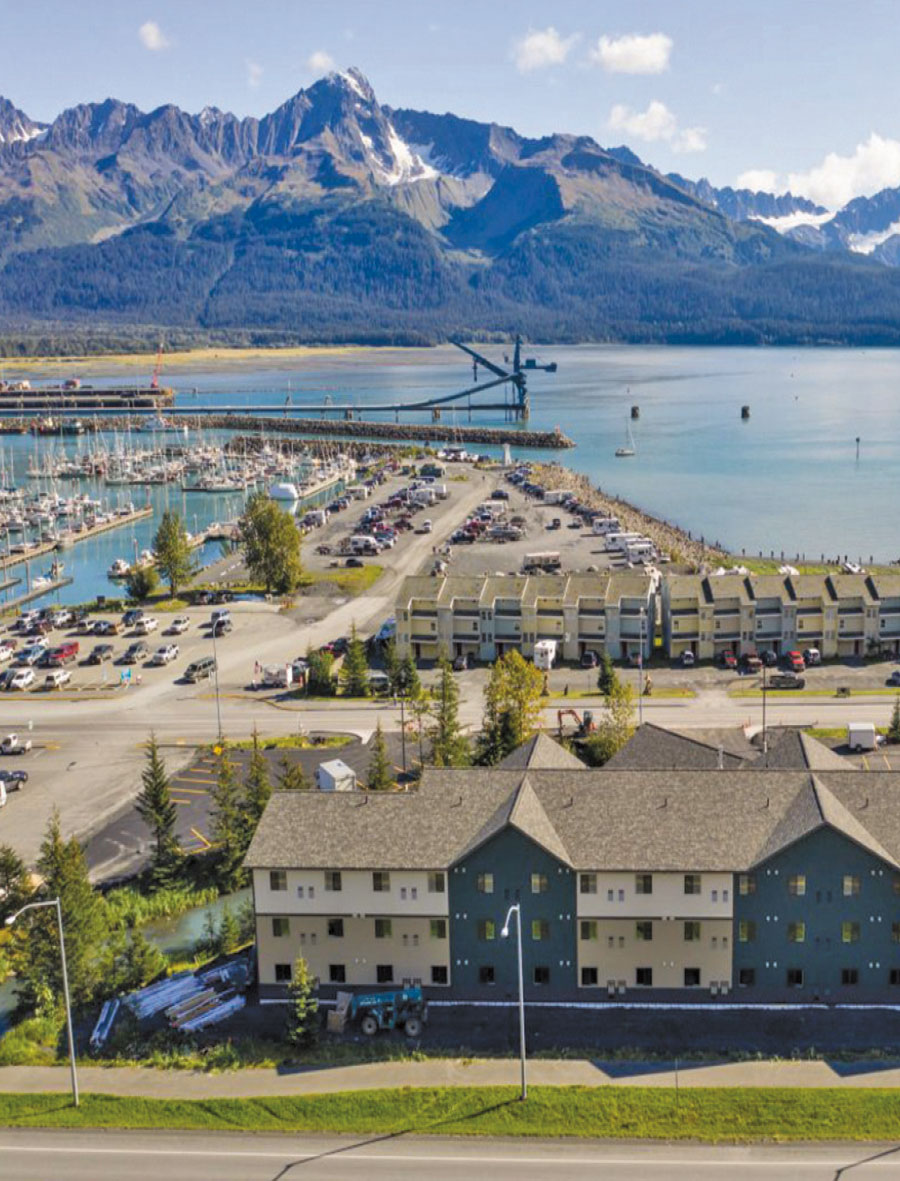
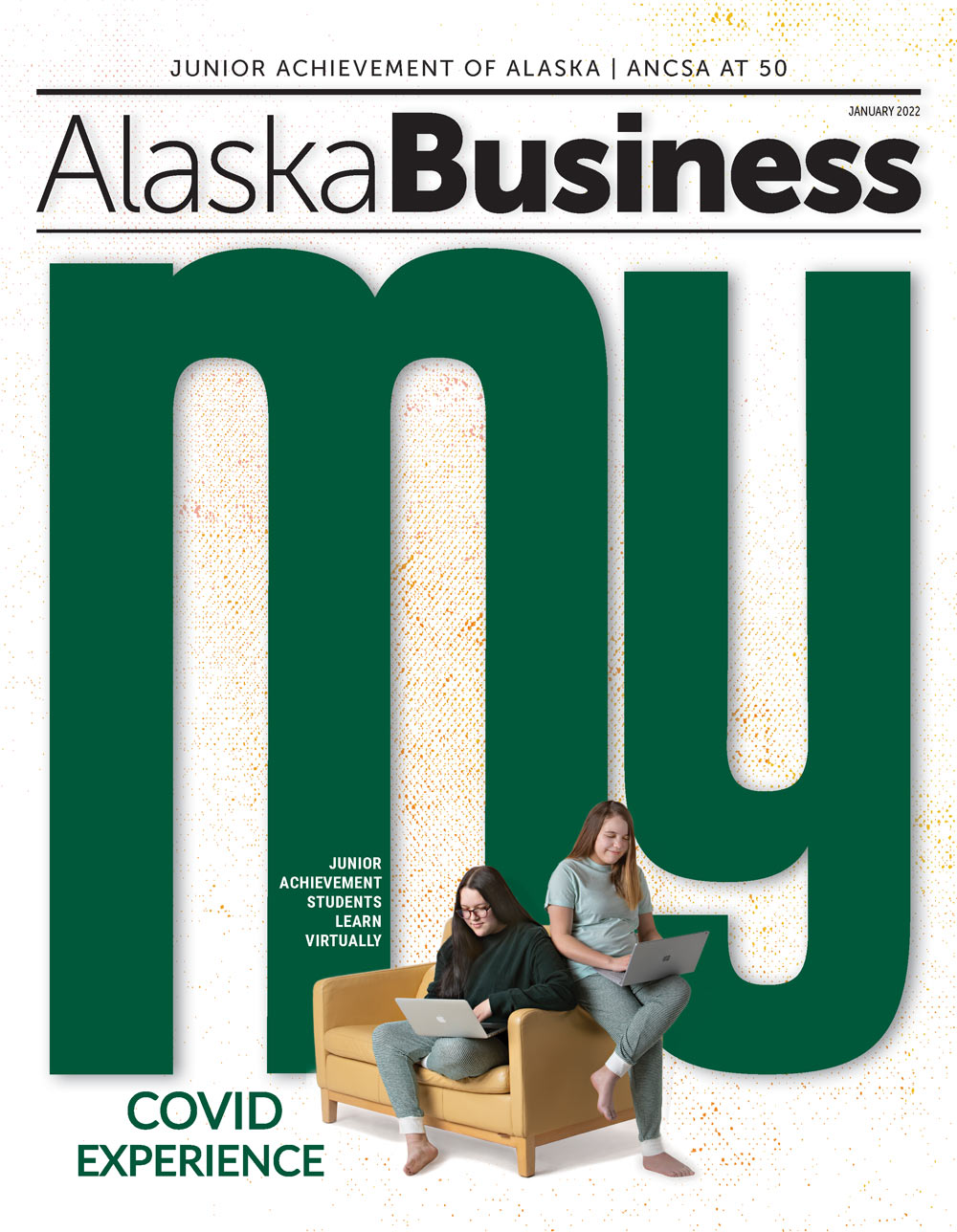
About The Cover
Say hello to Ezra Van Deursen and Briley Loncar, who were generous enough with their time to both write for the magazine and grace its cover this month.
As we were planning our annual Junior Achievement special section, we spent a good deal of time thinking about the experience our youth have had for the last two years. While as adults we all try to imagine what it would have been like to virtually transition from junior high to high school or to attend graduation, this is their normal, and our instinct is that it has prepared them for a future that we can’t envision.
Not too long from now, Van Deursen and Loncar will move into the workforce, already prepped from a young age to use technology routinely and creatively, adapt on the spot, and find ways to function in unprecedented situations. So the question may not be if they’re ready to join us, but if we’re actually prepared for them.

The Signs, They Are A-Changing
By Alexandra Kay
Charging Ahead to Reduced Emissions
By Rachael Kvapil
By Vanessa Orr

About The Cover
Say hello to Ezra Van Deursen and Briley Loncar, who were generous enough with their time to both write for the magazine and grace its cover this month.
As we were planning our annual Junior Achievement special section, we spent a good deal of time thinking about the experience our youth have had for the last two years. While as adults we all try to imagine what it would have been like to virtually transition from junior high to high school or to attend graduation, this is their normal, and our instinct is that it has prepared them for a future that we can’t envision.
Not too long from now, Van Deursen and Loncar will move into the workforce, already prepped from a young age to use technology routinely and creatively, adapt on the spot, and find ways to function in unprecedented situations. So the question may not be if they’re ready to join us, but if we’re actually prepared for them.
Quick Reads

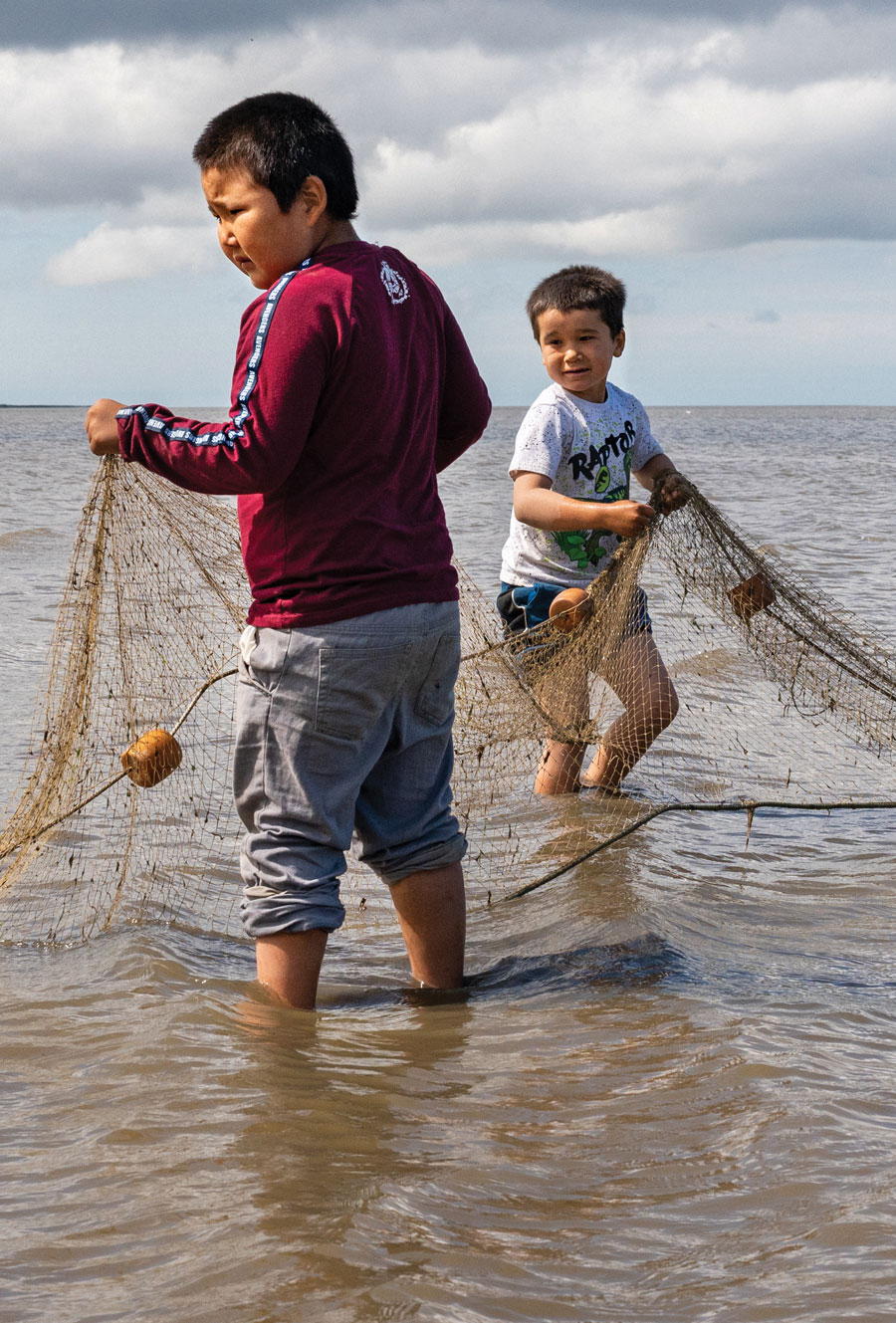
To order back issues ($9.99 each including postage) visit simplecirc.com/back_issues/alaska-business.
From the Editor
At Alaska Business, we have a lot to look forward to.
For example, I’m personally excited about the challenge and opportunities presented by our newly crafted editorial calendar process. In past years, we finalized industries and headlines for a set number of articles for an entire year all at once. This year we’ve pulled back slightly on the concrete planning and we’re putting down flags and stakes instead. We know what our special sections will be, we’ve planned areas of focus, and we know what industries we’re going to highlight, but some of those details are still fluid. We have guidelines, but we also have more freedom, and with that we plan to provide our readers with articles, photo essays, columns, profiles, and other features that are even more timely and informative.

Kerry Tasker
Billie Martin
press@akbizmag.com
Postmaster:
Send address changes to
Alaska Business
501 W. Northern Lights Blvd. #100
Anchorage, AK 99503


he pandemic stripped the varnish off Alaska’s economy. The recovery from COVID-19 has been slower than expected in 2021 for myriad reasons, including stalling vaccination rates, the Delta variant, and labor shortages. The damage done to the economy also brought into focus deeper issues tied to four straight years of net out-migration from the Last Frontier.
Alaska employment numbers increased in 2021 since tumbling to about a twenty-year low in 2020. Based on preliminary data available in November, Bill Popp, president and CEO of the Anchorage Economic Development Corporation, is seeing marginal growth in Anchorage—the primary economic center of Alaska—since the pandemic first struck.
indow graphics, business shingles, and roadside banners by Broadway Signs have been catching eyes across Alaska since 1969. All that time, the Anchorage-based business has been run by the Shockley family—which will continue for the foreseeable future. Jayson Shockley recently took over ownership of Broadway Signs, the third generation to manage the business started by his grandparents.
Jack and MaryRose Shockley opened Broadway Signs on Spenard Road in 1969, two years after the couple and their young son, Jack Jr., moved to Alaska from Phoenix, Arizona. Though Shockley senior was a foreman at a sign company in Arizona, he began his career in Philadelphia, where “he would literally hang off three- and four-story buildings—before cranes—and he would use a chisel to bore a hole into a concrete wall,” as Jack Jr. recalls. After some hard times, the family ended up in Phoenix and was there only six or seven years when Shockley was lured to Alaska with the promise of a big job. “In 1967, he met a guy with an Alaskan license plate, and he went home and told my mom to throw out anything that didn’t fit in the truck because we were leaving in two weeks,” says Jack Jr.
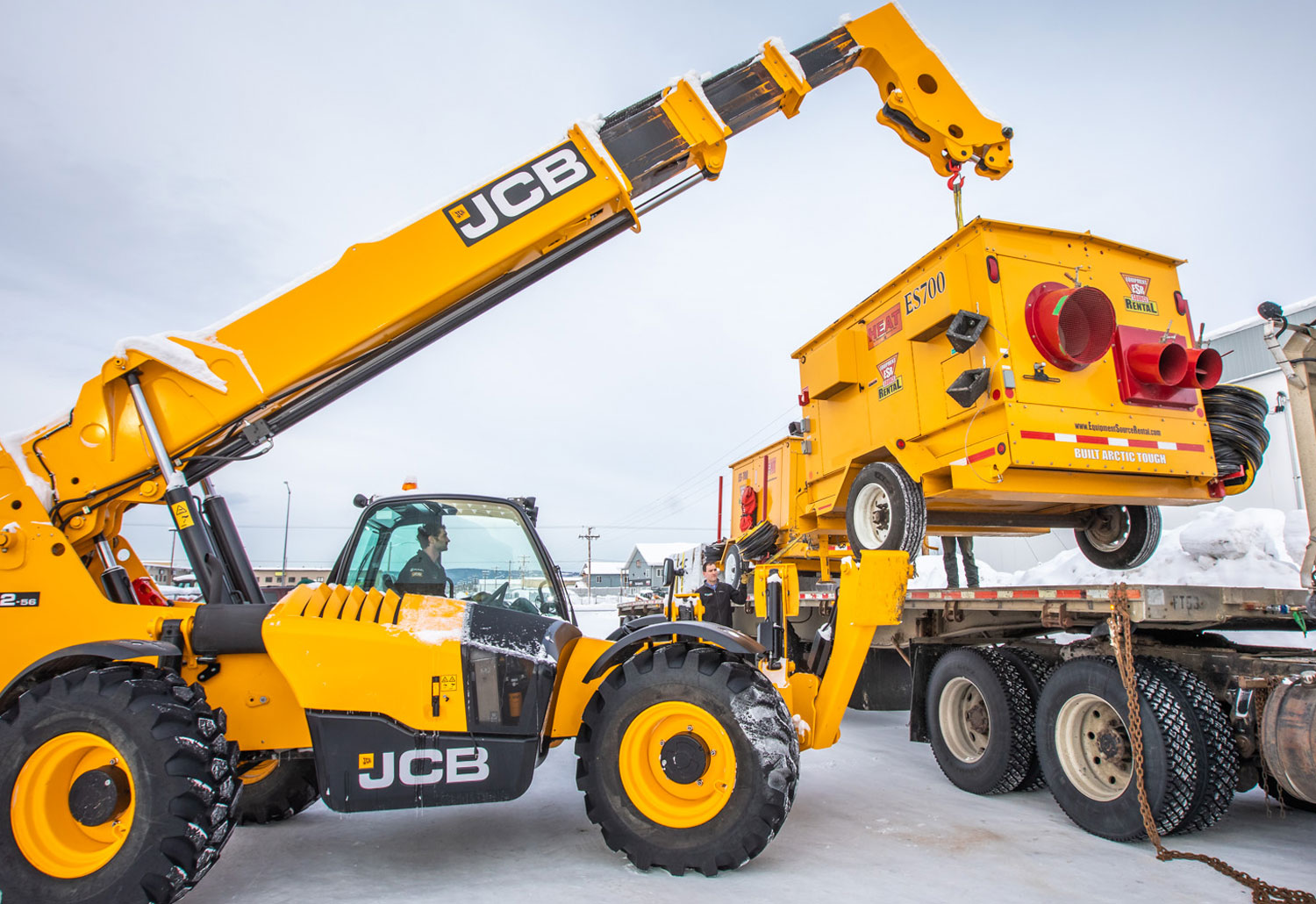
we know Alaska!
(907) 341-2250
Fairbanks
(907) 458-9049
(425) 251-6119
Williston
(701) 774-5312

or more than forty-eight years, Junior Achievement (JA) has made it possible for hundreds of thousands of K-12 students in Alaska to have the JA experience. The formula is simple: we equip volunteers from the business community with our award-winning curriculum and send them into classrooms to teach students about money, careers, and business—and it works.
Independent studies reflect the value of JA programs. Students exposed to JA perform better academically, have higher graduation rates, are more prepared to make career choices, and experience greater social mobility. Perhaps more importantly, JA endeavors to help students see how personal responsibility, hard work, perseverance, and grit connect to success. These lessons have never been more relevant.
he pandemic prevented Junior Achievement (JA) of Alaska from celebrating the Alaska Business Hall of Fame in 2021. Instead of choosing a new cohort of laureates for 2022, JA of Alaska chose to postpone its event so that it could give the same honor, time, and attention to this fantastic and well-deserving group of inspirational business leaders.
In order to support JA of Alaska, we chose to run the laureates’ profiles (easily accessible in our January 2021 digital edition, available on our website) in our January 2021 issue. One year later, we’re highlighting the JA Alaska Business Hall of Fame Laureates in a different way. We hope you enjoy these brief accounts of some of their earliest introductions to business.
t the 2022 Alaska Business Hall of Fame, Junior Achievement of Alaska’s staff and board will pay tribute to what has become a signature element of the event—the passing of the baton by its beloved master of ceremonies, Retired US Army Major General Mark R. Hamilton. After a decade in the role, Hamilton is letting someone else take the mic.
Being the emcee at an event featuring Alaska’s most powerful business leaders is not without its challenges. After years of budget cuts, staff reductions, and turnover, the event lacked structure. “When you have a lot of speakers and transitions, the emcee has to facilitate that process so that the program continues to flow. And of course you have technology problems, typos in the script, lighting problems, and things like that,” says Flora Teo, president of Junior Achievement of Alaska. “And Mark always handled everything beautifully.”
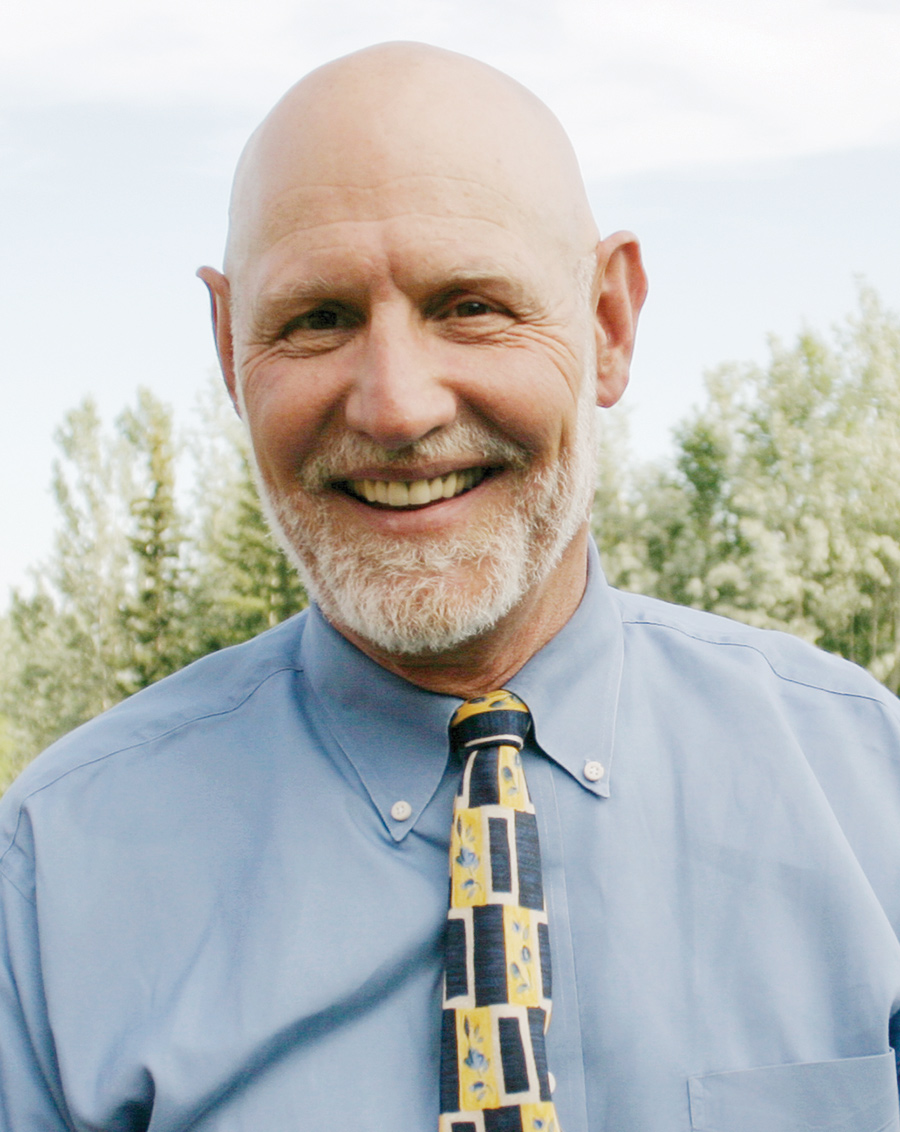
am in seventh grade at Wendler Middle School. My family moved to Alaska about three years ago, and my mom works for GCI. My mom is always telling me how important it is to work hard in school so that, one day, I can be successful and earn my own money.

hen schools closed in March 2020, I was in eighth grade. At first when I heard that we would not be going back to school after spring break, I was happy. I thought I would just have a longer spring break. I quickly realized that school was going to change.
When I first logged in to virtual school, my teachers were very encouraging. They told us that we would all make it through, and even though it was scary, we would make it through together. I didn’t realize at first how serious the pandemic would be. At first it was hard to set a routine and attend school at home, but my homework wasn’t that bad. Then it became draining. Staying focused and motivated became hard because every day was the same. It’s not as fun going to school at home because you are not around your friends. I felt isolated and stuck because I couldn’t do anything or go anywhere.
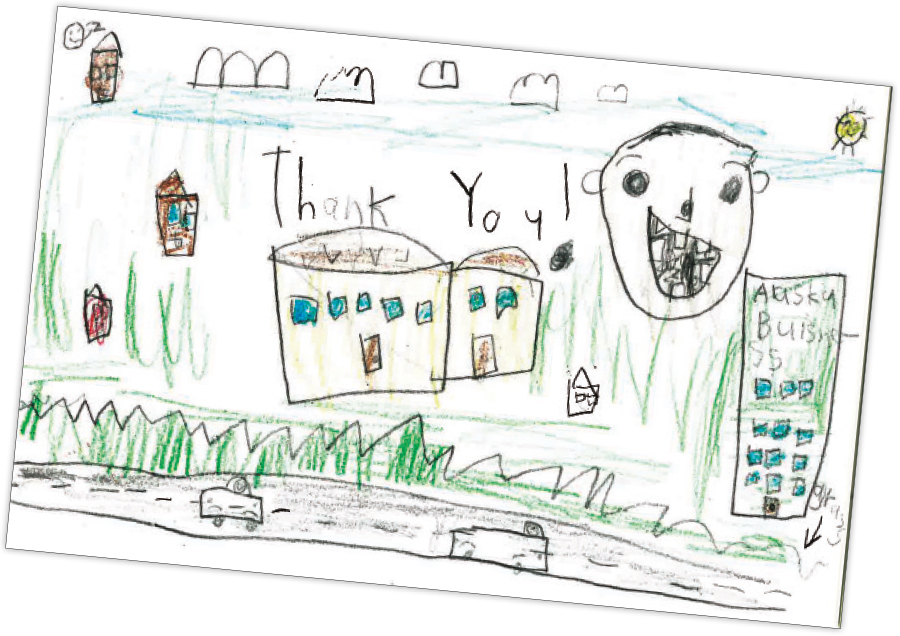

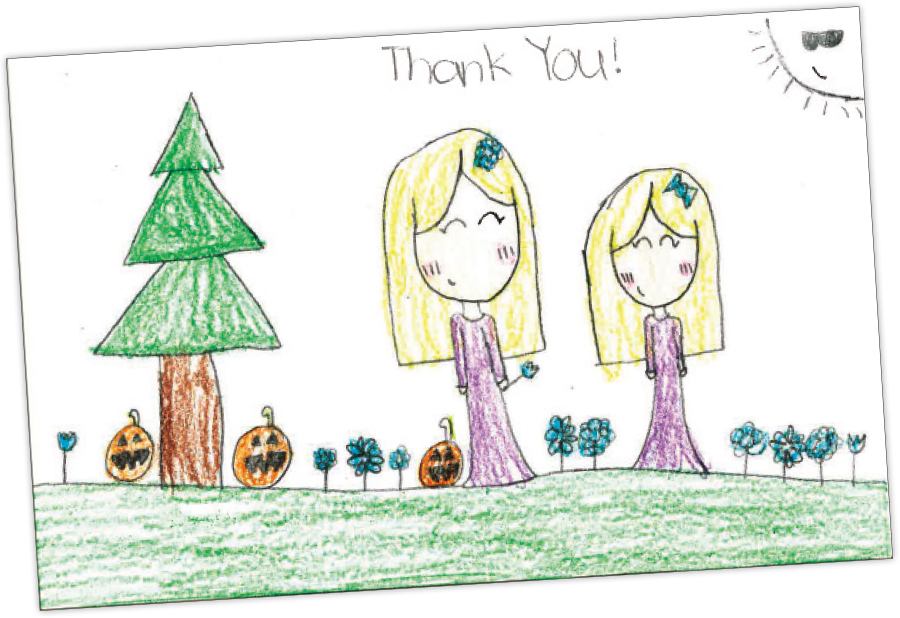

n October I took advantage of an opportunity to participate in JA in a Day, a program by Junior Achievement (JA) of Alaska that brings volunteers into schools to teach students about business. It was exhausting and fantastic, a wonderfully fulfilling opportunity to connect with local youth and share a little bit of myself to hopefully give them a foundation of financial success in their future.
So here’s how it went.
In my case, because of the longstanding relationship between JA of Alaska and Alaska Business, JA of Alaska’s President Flora Teo was kind enough to send over an invitation to our entire office, and both myself and our Bookkeeper James Barnhill decided to jump in with both feet.
Industry and
Economic
Development
in Alaska
business with us year after year.

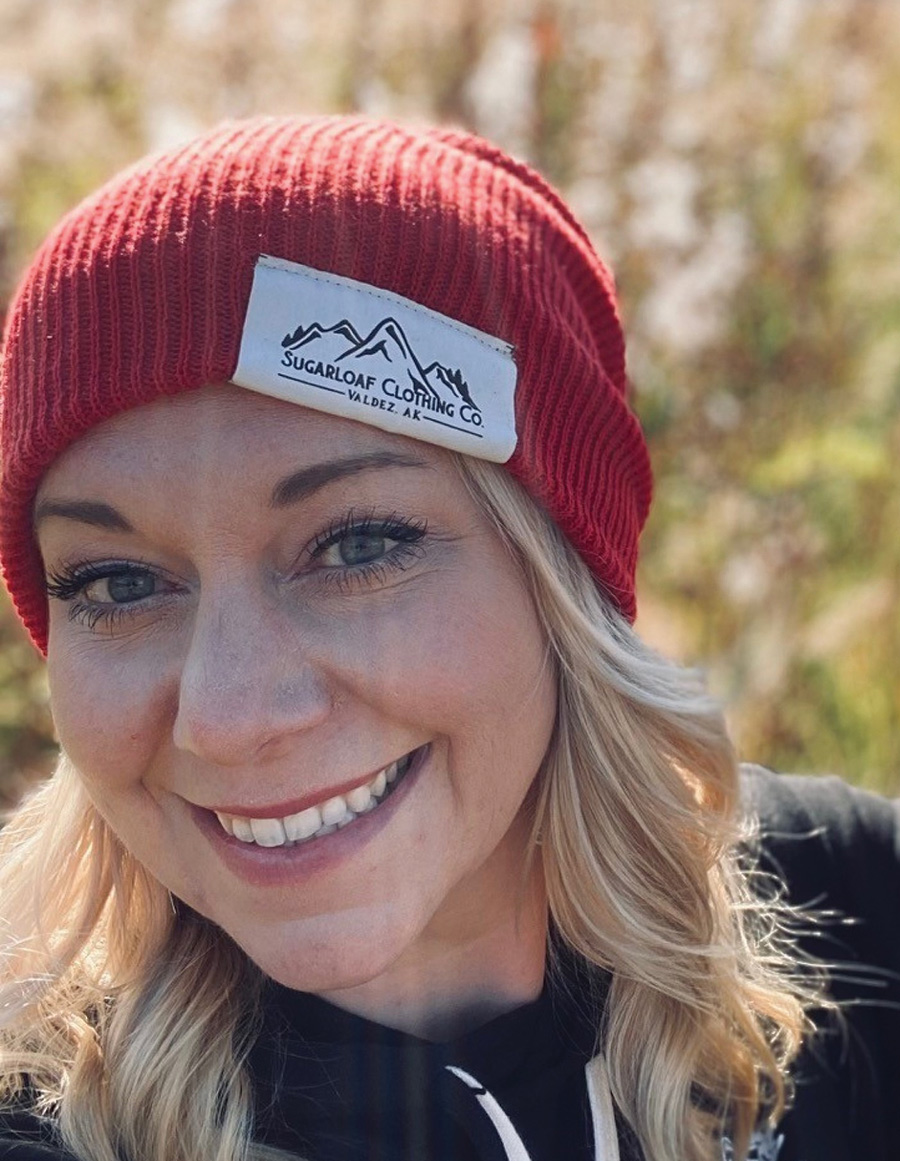
come from a family of entrepreneurs,” says Jenna Compehos, the compliance and documentation specialist at the Valdez Marine Terminal for Alyeska Pipeline Service Company.
Her great-grandparents came to Valdez by steamship during the gold rush and started the Gilson Mercantile bank. Her grandfather, George H. Gilson, owned a restaurant and grocery store in Valdez. “So I’ve always carried that around,” Compehos says. “Just like, ‘What could I do? I wanna do something. I want to own my own business.’”
Since being named Junior Achievement (JA) Alaska Volunteer of the Year, Compehos has done exactly that. In 2021, she opened Salty Lupine, a gift shop specializing in Alaska-made art. “It is something that Valdez needed,” she says. “I’ve also had a dream to own my own little boutique, and that’s kind of how it sparked the idea.”
n a frosty morning, Linson Thompson greets Sand Lake Elementary students before they set foot inside. “Ohayo-gozaimasu,” the principal says to students arriving for Japanese immersion classes; he says “Good morning” to those attending Sand Lake as their neighborhood school.
By Christine Merki, Account Manager
irst, let’s get one thing straight: name recognition is not branding. The fundamental goal of branding is bonding with customers, many of whom you’ve never met—and differentiating your goods or services from the marketplace. Sure, there has to be a visual component: the right colors, the perfect logo, or a clever slogan. But ultimately visuals are only one part of an effective branding campaign. You also want customers to feel a certain way when they think about your business, which comes through every interaction.
“It’s brand salience that ensures your solutions come to mind first in any buying situation—and that potential customers listen to what your content and ads have to say. In changing times, buyers of all types seek out brands they can trust, with values that align with their own. The chances are that new customers with new needs are coming into your category—and marketers who’ve invested in wider awareness and building perceptions have a valuable head-start,” says Sr. Content Marketing Manager at LinkedIn Jane Deehan.
dam McMahan knew from a young age he wanted to be a physician. He can pinpoint the exact moment he decided to practice medicine in a small rural town.
The Lexington, Kentucky native was leafing through magazines in his grandfather’s office when he came across a photo essay in a 1948 issue of Life. Titled “Country Doctor,” the article chronicled the author’s life as a doctor in rural Colorado, treating everything from broken ribs to head traumas.
“I still remember the awe and visceral excitement from this moment,” says McMahan, who now serves Haines and Klukwan as a family physician with the Southeast Alaska Regional Health Consortium (SEARHC). “Since then, I knew that I wanted to practice medicine in a small mountain town.”
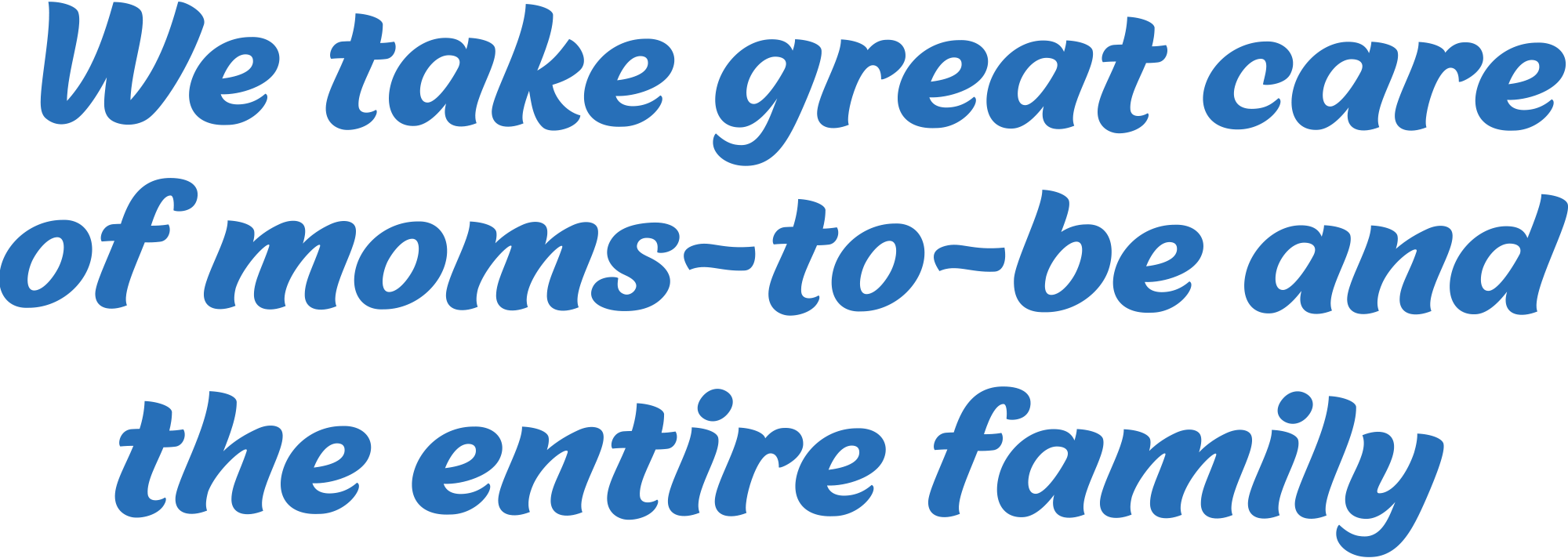
- Our Doctors in Pediatrics are specialists, and parents.
- Same day appointments available – in person or telemed.
- Complimentary no charge pre-natal meeting so expectant parents can meet our doctors and staff to be sure we’re a good fit for the entire family.
- On-site lab and radiology diagnostics, same day results.





- Our Doctors in Pediatrics are specialists, and parents.
- Same day appointments available – in person or telemed.
- Complimentary no charge pre-natal meeting so expectant parents can meet our doctors and staff to be sure we’re a good fit for the entire family.
- On-site lab and radiology diagnostics, same day results.
ailpipes of idling cars and trucks exhale visible wisps on a chilly day. The clouds are mostly harmless water vapor. The invisible part, though, is carbon dioxide. According to the Environmental Protection Agency (EPA), 29 percent of US greenhouse gas emissions come from transportation, more than any other man-made emitter. The EPA further states greenhouse gas emissions from transportation primarily comes from burning fossil fuel for cars, trucks, ships, trains, and planes, as long as more than 90 percent of vehicles run on petroleum-based fuel (gasoline and diesel).
Those emission rates have created a push for alternatives to the combustion engine, primarily electric vehicles (EVs) or plug-in hybrid vehicles (PHEVs). Both types of EVs are still a minority vehicle in Alaska, but the use is increasing every year. Several organizations have started offering financial incentives to install commercial and residential charging stations. However, there are a few barriers to overcome before EVs make up a majority of Alaska’s road transportation.
Currently installing satellite broadband systems for tribes, telecoms, and businesses STATEWIDE.
we’ll help protect it.

With Arctic IT as your managed cloud services and security partner, you will enjoy measurable advantages such as
- Stronger security
- Predictable IT costs
- Faster support
- And time to focus on business objectives

the dots.
ourists returning to Alaska after the drought of 2020 had plenty of new and renovated hotels to choose from in 2021. Construction seemingly never ends, even in the face of materials shortages, rising costs, and transportation headaches.
“I would say that things are running on average,” says Alicia J. Maltby, president and CEO of the Alaska Hotel & Lodging Association. “It seems like a few things have stalled due to COVID, but if we had not faced a pandemic, several of these projects would already be open, which would keep the state on par with the number of average openings that we have seen in the past five to ten years.
igging up buried treasure without a map is always somewhat of a gamble.
“Exploration is significant capital invested without a sure outcome,” says Deantha Skibinski, executive director of the Alaska Miners Association. “[But] without exploration, the industry will not grow and existing mines will not expand.”
Mineral exploration is the driving force behind the other two components of Alaska’s mining industry: mine development and mineral production.
Alaska’s 2021 mining exploration season got off to a slow start in March due to a coronavirus pandemic-induced lack of drilling equipment and worker shortages. Despite obstacles, it bounced back for the most part and finished another successful year.
While a full compilation of this year’s mining economic numbers won’t be available until later in the year, some of the larger companies are sharing their results.
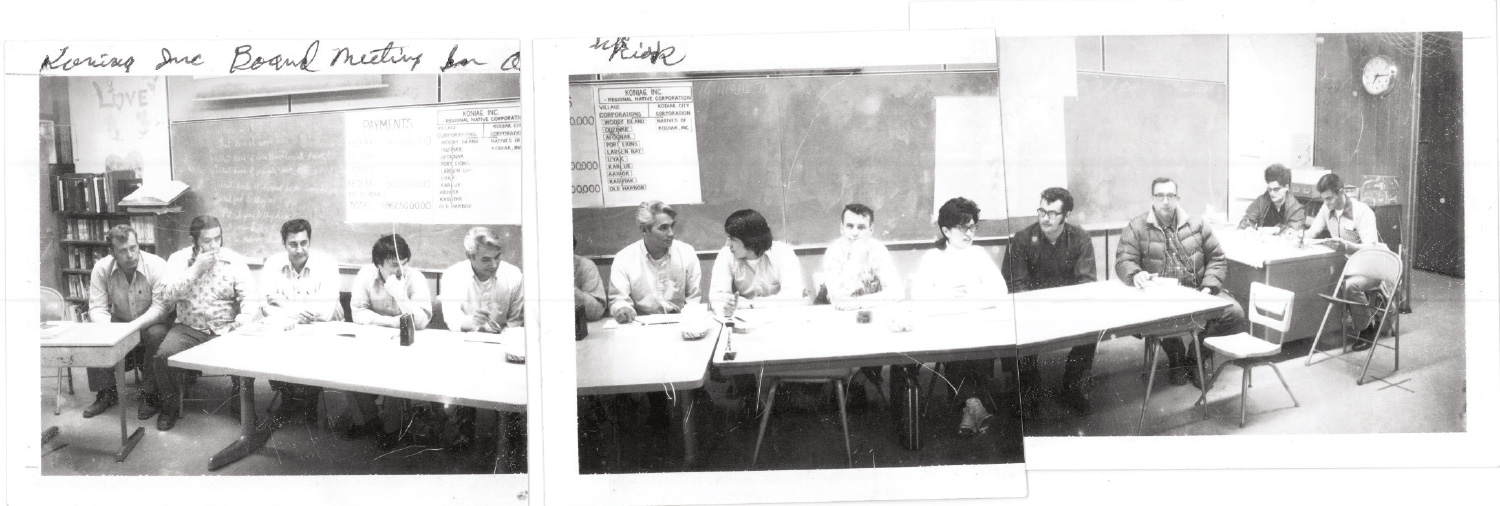
n December 18, 1971, President Richard Nixon signed the Alaska Native Claims Settlement Act (ANCSA) into law. Fifty years later, it’s impossible to measure the innumerable effects this legislation has had on the state of Alaska.
It created regional and village corporations that provide goods and services in every industry Alaska Business covers, which is why we treat them as their own economic sector. They are some of Alaska’s largest companies by revenue, they are some of Alaska’s largest employers, and they have national and international business interests.
Because of their dual mandate to make a profit and to care for their people and lands, they are politically active when necessary and they have a deliberate focus on community, education, and philanthropic activities across the state, without exception.
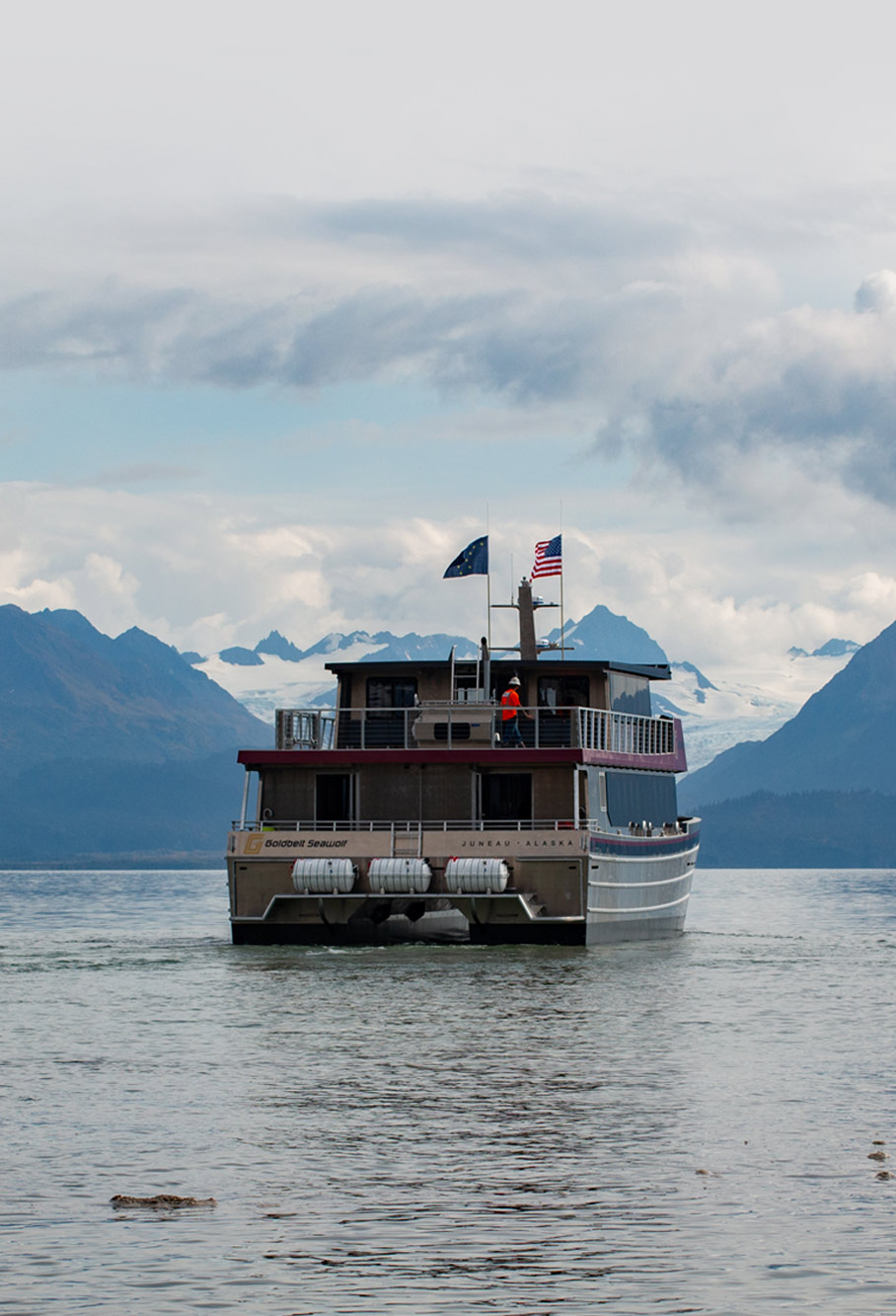
Phone: (907) 790-4990 | (800) 770-5866 | Fax: (907) 790-4999 | www.goldbelt.com
3025 Clinton Drive, Juneau, AK 99801
n 2011, the Alaska Native Village Corporation Association (ANVCA) was founded by The Kuskokwim Corporation, also known as TKC, a group of ten village corporations in the middle region of the Kuskokwim River that merged together in 1977. Today, there are 176 village corporations in Alaska that are de facto members of ANVCA.
“ANVCA promotes the success of our village corporations and protection of our Native lands,” according to the nonprofit’s mission statement.
TKC had the vision and the foresight to create ANVCA and was the association’s first member, providing office space for the organization during startup.
Remote
Logistics.
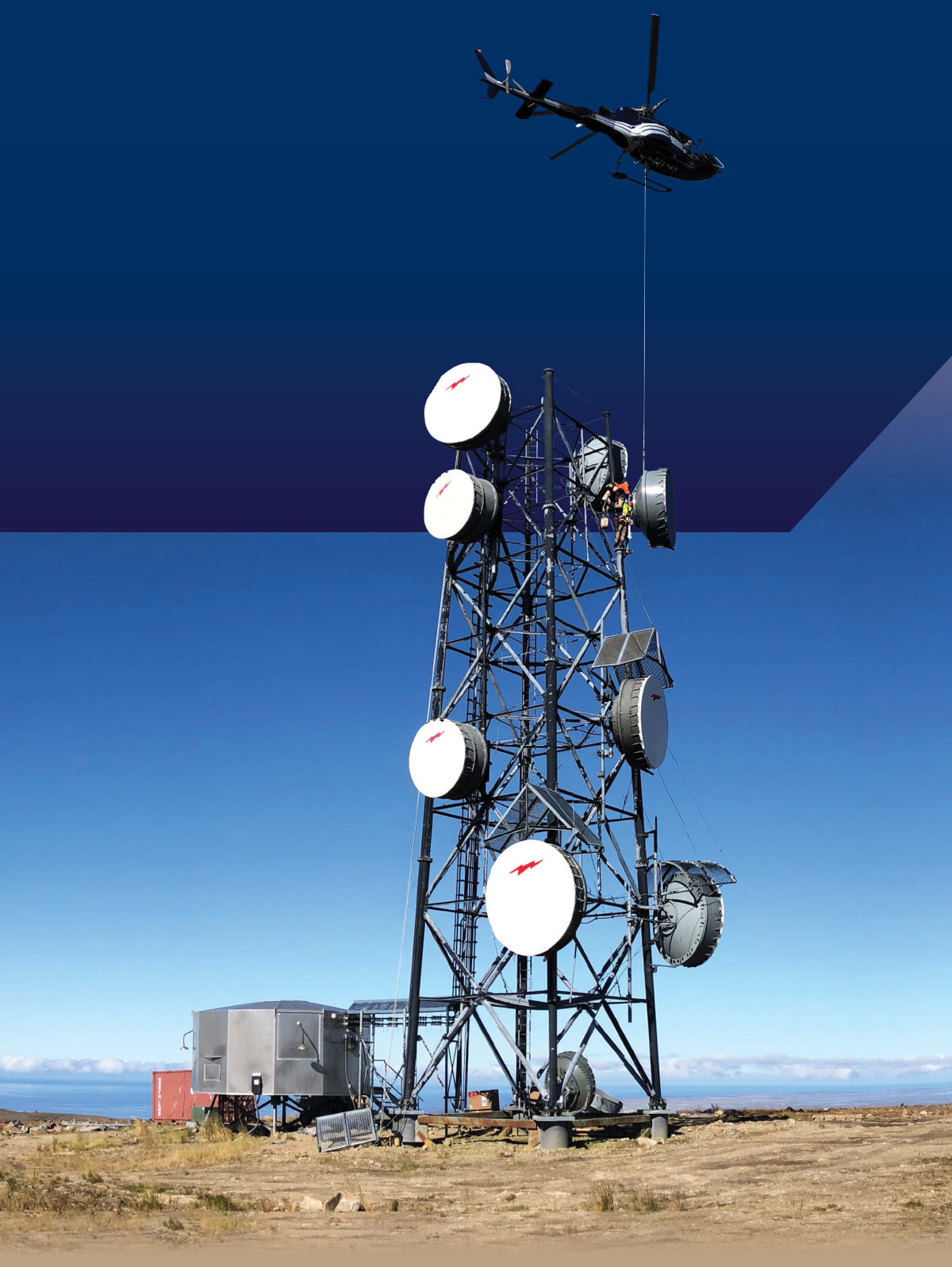
Microwave Installation
Mountain Top Logistics
Regional
Association
laska Native corporations (ANCs) are as diverse as the Alaska Native shareholders and communities they represent, all with varying interests. An organization works behind the scenes to support ANCs in areas where those interests intersect; it started to come together after the Alaska Native Claims Settlement Act (ANCSA) was half as old as it is now.
In 1997, a group of Alaska Native regional corporation leaders came together to discuss the unique advantages of creating a forum where they could collaborate on issues they had in common. They agreed that, given the differences in purpose, structure, and mandates among ANCs and other organizations representing Alaska Native people, they must discuss and respond to the common challenges faced by Alaska Native regional corporations.
Honoring our Culture

Partners to the Alaska Native Community
DWT has been part of the Alaska community for more than forty years. Our lawyers use their depth and breadth of experience to serve and partner with our clients, including many Alaska Native entities, as they develop, grow, and strengthen their non-profit and for-profit enterprises.
Business & Corporate
Energy
environmental
Government Contracts
Healthcare & Tribal Health Organizations
Labor & Employment
Litigation
Non-Profits & Foundations
Privacy & Security
Real Property
Telecommunications
s the people of the Yukon-Kuskokwim region, we practice subsistence by following qanruyutet (gan-ya-wu-DET), or words of wisdom, from our Elders. They tell us food creates family bonds and that Elders wish good fortune upon those who help them. We may have harvested the seal, but if we do not share the bounty from the sea, we are not following qanruyutet.
The Calista region is home to fifty-six villages spread out along the Bering Sea coast and two of Alaska’s mightiest rivers—the Yukon and Kuskokwim—and it encompasses 57,000 square miles. Calista Corporation’s land entitlement in the region is 6.5 million acres, less than 20 percent of the region.
ancsa.lbblawyers.com
ince the Klondike Gold Rush of 1898, the Ahtna people have learned and applied new ways of managing the food and resources that sustained us for a millennium. In one lifetime, we went from being the only inhabitants of our region to co-managing the resources of our homeland alongside state and federal actors. With the passage of the Alaska Native Claims Settlement Act (ANCSA) in 1971 and the Alaska National Interest Lands Conservation Act in 1980, new options for protecting our peoples’ resources appeared, accompanied by challenges for preserving subsistence and traditional knowledge.
During World War II, highways were built providing access to the Copper River Basin. As a result of this and other development, Ahtna, Inc. is the only Alaska Native regional corporation whose villages are all road accessible. At times, that accessibility has proven helpful, but it has meant increased traffic through our lands from non-Indigenous residents and pressure on the area’s limited fish and wildlife resources. We set out to solve this problem with the knowledge that securing our traditional food sources is an integral part of our culture. Subsistence is more than putting food on the table; it is who we are. Similarly, traditional knowledge is more than history; it is essential in maintaining the resources of our lands for future generations.
ituated about 80 miles from Kotzebue, the Red Dog Mine is the world’s largest producer of zinc and has one of the world’s largest zinc reserves. The mine is operated by Teck Resources Limited (formerly Teck Cominco Limited) and is located on land owned by NANA Regional Corporation. NANA, one of twelve Alaska Native Regional Corporations created under the 1971 Alaska Native Claims Settlement Act (ANCSA), is owned by the more than 15,000 Iñupiat shareholders who live in or have roots in northwest Alaska. Red Dog Mine is integral to achieving NANA’s broad mission for its shareholders: to improve their quality of life by maximizing economic growth, protecting and enhancing its lands, and promoting healthy communities.
ituated about 80 miles from Kotzebue, the Red Dog Mine is the world’s largest producer of zinc and has one of the world’s largest zinc reserves. The mine is operated by Teck Resources Limited (formerly Teck Cominco Limited) and is located on land owned by NANA Regional Corporation. NANA, one of twelve Alaska Native Regional Corporations created under the 1971 Alaska Native Claims Settlement Act (ANCSA), is owned by the more than 15,000 Iñupiat shareholders who live in or have roots in northwest Alaska. Red Dog Mine is integral to achieving NANA’s broad mission for its shareholders: to improve their quality of life by maximizing economic growth, protecting and enhancing its lands, and promoting healthy communities.
Engineers, Inc. has a proud history, and we are excited to celebrate the Alaska Native Corporations as they continue to grow, push progress, and expand horizons for indigenous people across the state. PND was co-founded in 1979 by Roy Peratrovich, Jr., the oldest child of legendary civil rights activists Elizabeth and Roy Peratrovich, who championed the passage of the Alaska Anti-Discrimination Act of 1945 – the first anti-discrimination law in American history. A member of the Tlingit Indian Tribe, Raven Clan, Roy Peratrovich, Jr., was the first Alaska Native to earn a professional engineering license in the state (1962) – “AK-CE-1100: I’m pretty proud of that one,” Roy says. With great honor, PND wishes the Alaska Native Claims Settlement Act a happy 50th anniversary.
907.561.1011 • www.pndengineers.com
PND has a long history of working with ANCs, tribes, and tribal organizations across the state, and we look forward to continuing and expanding on those relationships in the future.
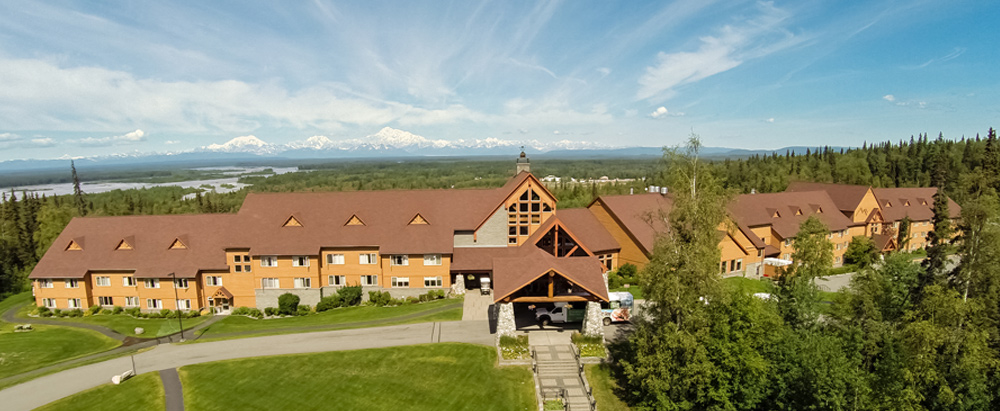
Talkeetna Alaskan Lodge
Structural Design and Inspection Services
Cook Inlet Region, Inc.
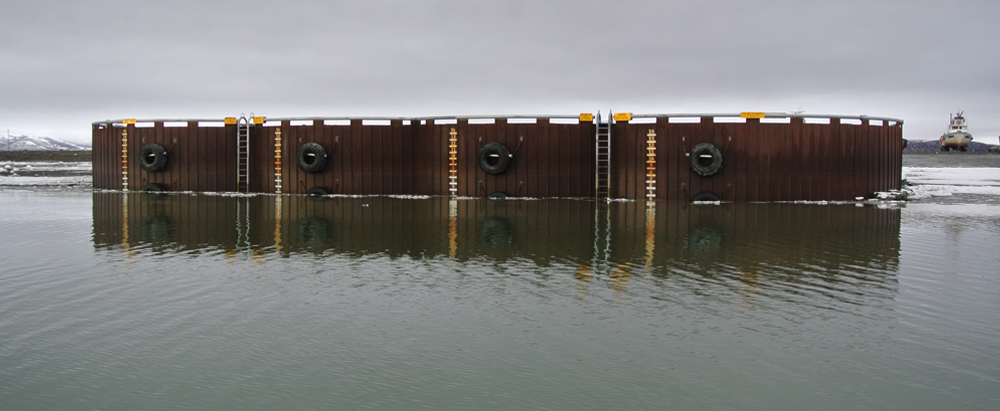
Togiak Multipurpose Dock
Marine Engineering and Survey Services
Traditional Council of Togiak
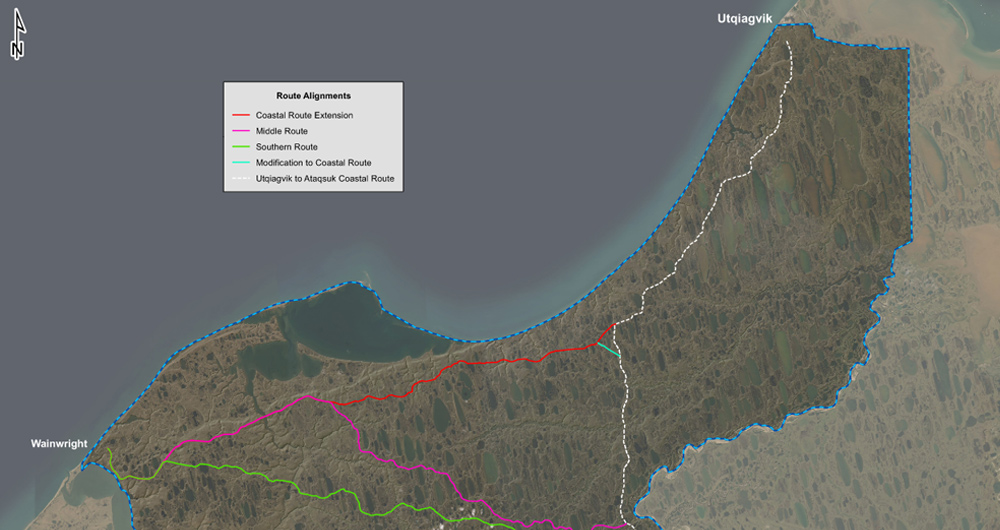
Arctic Strategic Transportation and Resources Project
Civil Engineering
Arctic Slope Regional Corporation
t Bering Straits Native Corporation (BSNC) our mission is our guiding star. This mission—to improve the quality of life of our people through economic development while protecting our land and preserving our culture and heritage—is what drives us. We know that having a strong sense of purpose and mission helps individuals and companies alike navigate uncertainty. Time has shown us how organizations that clearly define their mission are well-positioned for long-term success.
While each Alaska Native Corporation (ANC) has a different mission, we all have one thing in common: We work to create a healthier socioeconomic future for Alaska Native people. ANCs are unique in that their missions predate their incorporations. For more than 10,000 years, our ancestors have thrived in the Arctic, guided by the same principles that guide our corporation today. BSNC’s mission is not only a continuation of our way of life. It exists to guide us forward.
We are excited to celebrate the 50th anniversary of the passage of the Alaska Native Claims Settlement Act (ANCSA), which was signed into law on December 18, 1971. This law, rooted in Alaska Native ownership, empowers BSNC to have a social mission. We celebrate that, as a result of ANCSA, ANCs have become major economic drivers in Alaska, helping to protect the state’s economy through trying times, both before the pandemic and after.
Missions and values are strategic business elements that, when thoughtfully developed and effectively implemented, successfully guide corporate decision making. These elements, when combined, go on to inspire employees and provide meaningful benefits to shareholders.
Each of BSNC’s 2,000 employees work for a corporation owned by Indigenous shareholders. This means that everything from our everyday operations to our long-term decision making is guided by the Alaska Native values we cherish. We honor our commitments, we empower one another, we respect diversity, and we lead with responsibility. While being mission-driven provides us with focus and commitment, it is our values that keep us on track.
any passionate people fought in the ‘60s for a policy that would enable Alaska Natives to retain control of territory that had been their people’s homelands, a fight that resulted in the Alaska Native Claims Settlement Act (ANCSA), passed by Congress in December 1971. Among those activists was Marlene Johnson, one of the vice presidents of the Central Council of Tlingit and Haida at the time and ultimately a founder of, and director for, Sealaska.
“I think people need to know those people that fought for ANCSA were dedicated to the people of their region and Alaska,” Johnson told First Alaskans magazine in Spring 2021. “Those people working for the corporations and the passage of land claims were doing it out of love for the people and love for the land. I really appreciate them.”
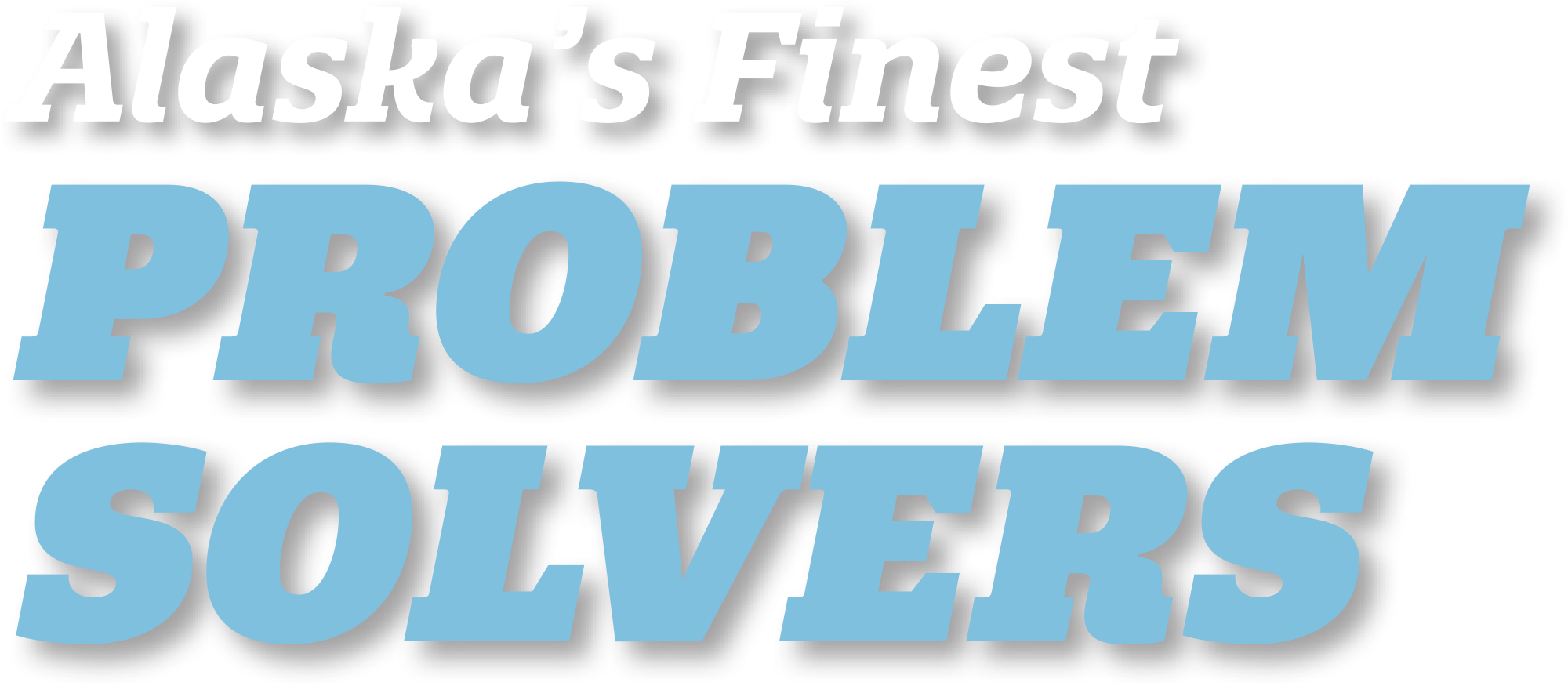
Learn more at www.cookinlettug.com.
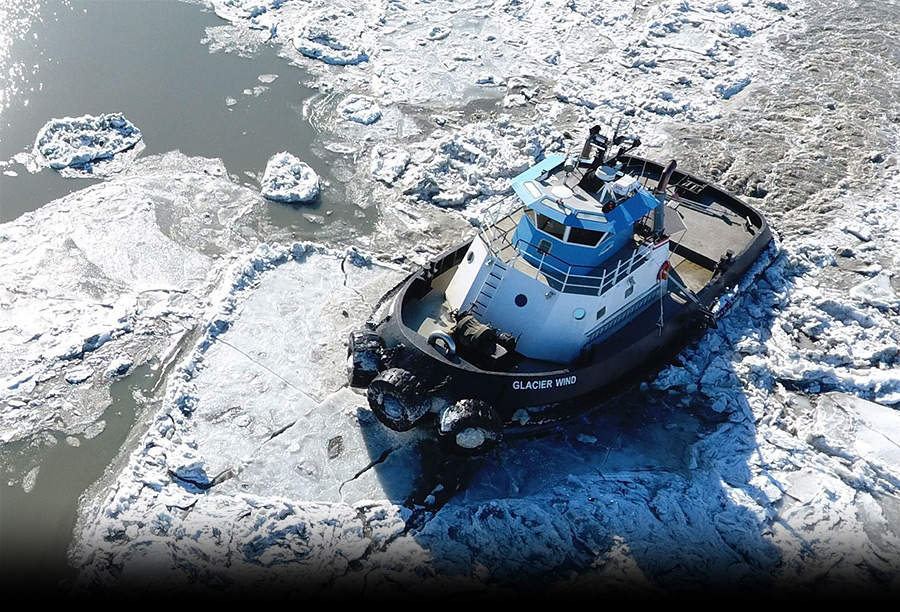

Learn more at www.cookinlettug.com.
oyon, Limited has a deeply rooted commitment to responsible land management and enhancing the well-being of its shareholders and region. Based in Fairbanks, Doyon was incorporated on June 26, 1972 and has more than 20,400 shareholders mainly of Northern Athabaskan descent in Interior Alaska. One of twelve Alaska Native Regional Corporations created under the 1971 Alaska Native Claims Settlement Act (ANCSA), Doyon is the largest private landowner in Alaska and one of the largest in North America. Under ANCSA, the corporation is entitled to approximately 12.5 million acres across the Interior. Doyon has selected 11.5 million acres to date, primarily around the thirty-four villages within its region.
s we celebrate the anniversary of the signing of the Alaska Native Claims Settlement Act (ANCSA), Arctic Slope Regional Corporation (ASRC) reflects on the strength, resilience, and determination of our early leaders. Those who fought to ensure the Iñupiat of the Arctic Slope would rightly benefit from the oil and gas development that was about to take place on our ancestral homelands. Not only did the passage of ANCSA create ASRC but it was also the reason for the incorporation of the North Slope Borough (NSB). ASRC and the NSB, two entities that represent the people in the northernmost region of the United States. Two entities whose origins are closely tied—without one, the other may not have come to be. Two entities who owe their existence to the coordinated efforts of the Iñupiat people of the Arctic Slope region.

LOCAL 375 FAIRBANKS, ALASKA 907-479-6221
I remember how excited my mom, Magnel, was as we enrolled to be owners of our traditional land. As Alaska Natives, we would become owners of lands and resources that we had been dispossessed of for centuries. The promise was exciting! But, at the time, I had no idea how the passage of ANCSA would affect me.
&
Grant Consultants
wned by husband-and-wife team Ken Miller and Raynell (Qaniigix) Gould, Denali Fundraising & Grant Consultants has been helping nonprofits solve community needs since 2014. Miller and Gould are passionate about employing their diverse leadership, deep roots in Alaska, and specialized expertise to help a variety of organizations acquire federal, state, municipal, or foundation funding.
Miller, Denali Fundraising’s president, is an African American who moved to the state in 1975 and a graduate of Anchorage’s Bartlett High School and Dartmouth College. “I grew up in Alaska and know the lay of the land, and I teach clients the best practices of successful fundraising,” says Miller, recipient of the 2020 Outstanding Professional in Philanthropy award from the Association of Fundraising Professionals’ Alaska Chapter. “I have worked with more than 100 nonprofits over the past seven years.”
e seem to be aching for a way out of the rat race we’ve created—and the next generation is demanding it.
Research shows Millennials place an extremely high value on work-life balance—some studies even assert that it tops all job factors (including salary). This focus on work-life balance comes as a stark contrast to the well-known high work demands and long hours many managers and corporate leaders have logged over the past few decades. It makes one wonder, how we will merge these two worlds and their contrasting needs?
Oil production declines at Prudhoe Bay have flattened thanks to “hundreds of fairly small projects,” according to Hilcorp. The company finished its first full year of operating BP’s former North Slope assets by announcing enough production to bend the decline curve. Jill Fisk, senior asset team leader at Prudhoe Bay West, says repairs to current drill sites and revival of older sites increased production from 271,000 barrels per day in 2019 to 299,000 in 2020 and 304,000 in 2021.
hilcorp.com
Parker, Smith & Feek
A Washington-based insurance firm with a strong presence in Alaska is now part of a much larger brokerage. Parker, Smith & Feek was acquired by IMA Financial Group. The 330 associates add to IMA’s nearly 1,400, doubling IMA’s healthcare specialty and significantly growing its construction practice.
psfinc.com
Economic Indicators
 501,065 barrels
501,065 barrels 6% change from previous month
6% change from previous month
11/29/21
Source: Alaska Department of Natural Resources
 $70.93 per barrel
$70.93 per barrel -17% change from previous month
-17% change from previous month
Source: Alaska Department of Natural Resources
 349,800 Labor Force
349,800 Labor Force 6.1% Unemployment
6.1% Unemployment
Source: US Bureau of Labor Statistics
 Danicia Shiryayev, now Vice President, Commercial Loan Officer, joined Northrim in 2016 and has more than twelve years of experience in the banking industry. She is pursuing a bachelor’s degree in accounting at UAS. Shiryayev is a board member of the Anchorage Chamber of Commerce.
Danicia Shiryayev, now Vice President, Commercial Loan Officer, joined Northrim in 2016 and has more than twelve years of experience in the banking industry. She is pursuing a bachelor’s degree in accounting at UAS. Shiryayev is a board member of the Anchorage Chamber of Commerce.
 Katie Bender, now Vice President, Community and Public Relations Manager, has been with Northrim since 2013 and has more than seventeen years of experience in communications and public relations. She holds a masters of public administration degree from UAA and is the board president of the UAA Alumni Association.
Katie Bender, now Vice President, Community and Public Relations Manager, has been with Northrim since 2013 and has more than seventeen years of experience in communications and public relations. She holds a masters of public administration degree from UAA and is the board president of the UAA Alumni Association.
 Edwin Strupulis, now an Assistant Branch Manager, Float Pool has been with Northrim since October 2020 and has five years of experience in banking. He is pursuing a bachelor’s degree in business administration at UAA.
Edwin Strupulis, now an Assistant Branch Manager, Float Pool has been with Northrim since October 2020 and has five years of experience in banking. He is pursuing a bachelor’s degree in business administration at UAA.
Alaska Trends
op quiz! A 15-year mortgage typically requires higher monthly payments than a 30-year mortgage but the total interest payments will be less. True or false?
Knowing the answer can mean the difference between saving or spending thousands of dollars for homeowners, and not knowing could discourage potential buyers from adding a home to their personal wealth. That’s why the FINRA Investor Education Foundation asks that question as part of its National Financial Capability Study. You can take the quiz online at usfinancialcapability.org and test your own financial literacy.
FINRA, the Financial Industry Regulatory Authority, is a non-government watchdog that oversees securities trading, so one of its tactics to protect the public from swindlers is, in essence, self-defense training. And, just like martial arts, although financial literacy might rarely be used against an actual aggressor, exercising the skill is part of a healthy lifestyle.
At a Glance
I read multiple books. I’m a mood-driven reader… I’ve got seven or eight books on my nightstand. One book that I’m most interested in is The Power of Pause: Becoming More by Doing Less by Terry Hershey. I’m very strong in my faith, I read scripture every day, so any faith-based reading is often on my nightstand, too.
Faith-based charities and those that support disadvantaged youth or address vulnerabilities associated with the elderly.
I hug my husband, my dogs, and my kids if they’re home. Not always in that order though [she laughs].
The holy land, Africa, and Australia.
Wolves: they’re a very complex, very intelligent animal, and they’re careful, and they’re playful. But what I like about them, too, is they’re highly devoted to family, the family structure.

At a Glance
I read multiple books. I’m a mood-driven reader… I’ve got seven or eight books on my nightstand. One book that I’m most interested in is The Power of Pause: Becoming More by Doing Less by Terry Hershey. I’m very strong in my faith, I read scripture every day, so any faith-based reading is often on my nightstand, too.
Faith-based charities and those that support disadvantaged youth or address vulnerabilities associated with the elderly.
I hug my husband, my dogs, and my kids if they’re home. Not always in that order though [she laughs].
The holy land, Africa, and Australia.
Wolves: they’re a very complex, very intelligent animal, and they’re careful, and they’re playful. But what I like about them, too, is they’re highly devoted to family, the family structure.
Off the Cuff
ori McCaffrey is President, Alaska Market and Commercial Banking Sales Leader for KeyBank. Her father also worked in the finance industry, and she started following in his footsteps in high school and college. “But I was afforded mentorship through some very high executives at KeyBank,” she says. “It did escalate me through various new opportunities at Key, but also instilled in me the importance of mentorship.”
She says it sounds cliché, but her favorite thing about her job really is helping people with their financial goals. “When you see the end results of what you and your team do, and they make a difference—it’s so rewarding.”
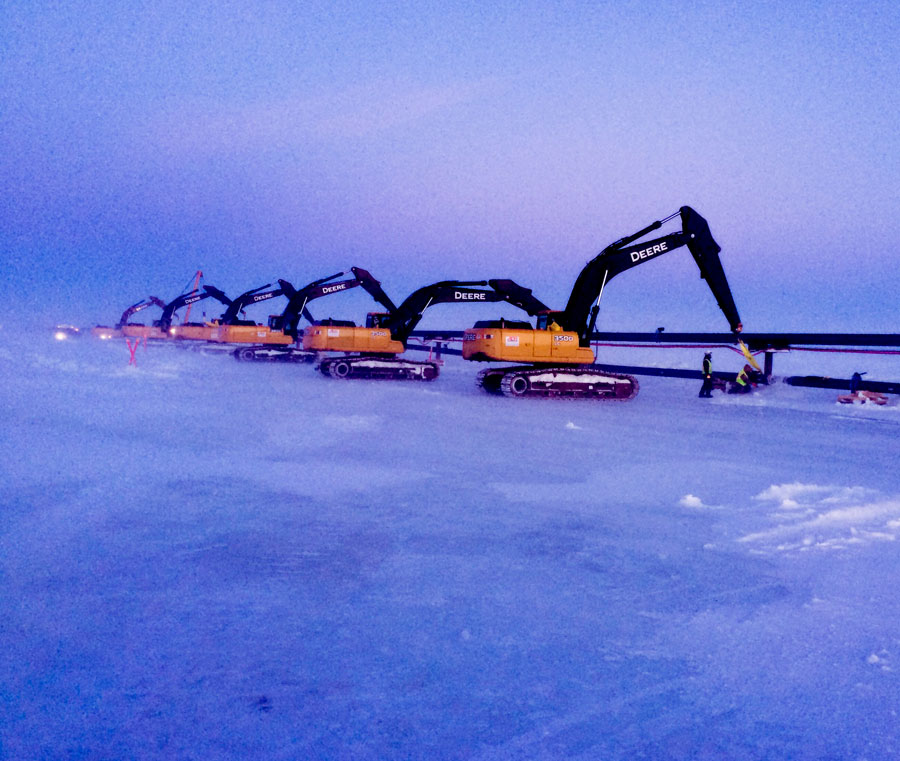

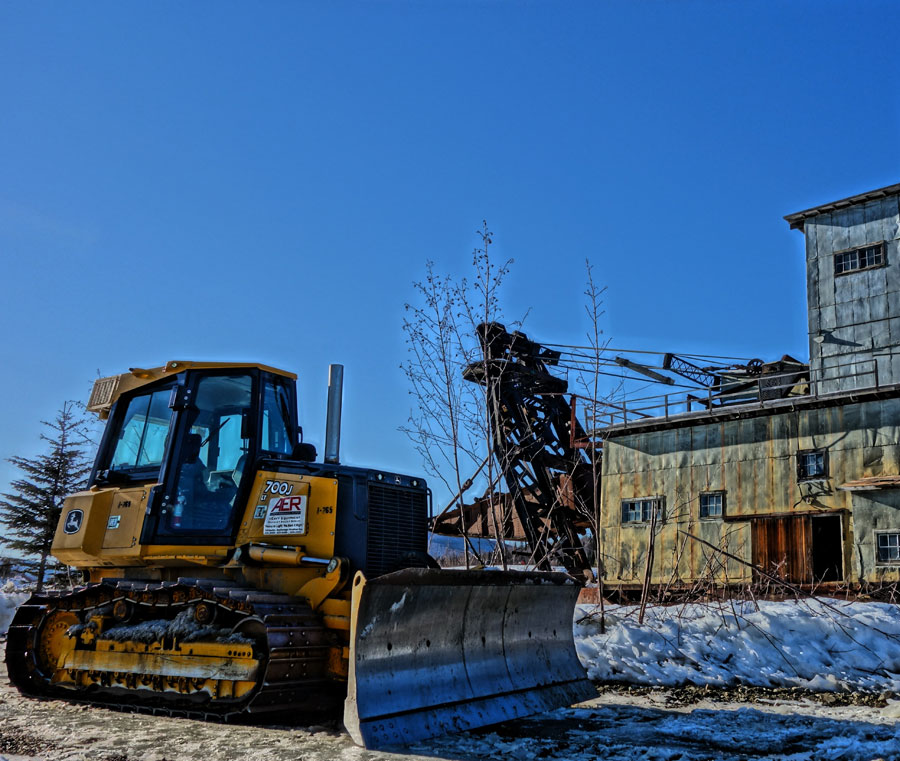












907.522.6466

907.474.2000
907.895.9898
907.456.2000
907.659.2000
907.335.5466

907.522.6466
The Rental Zone
907.474.2000
Delta Junction
907.895.9898
Fairbanks
907.456.2000
Prudhoe Bay
907.659.2000
Kenai
907.335.5466
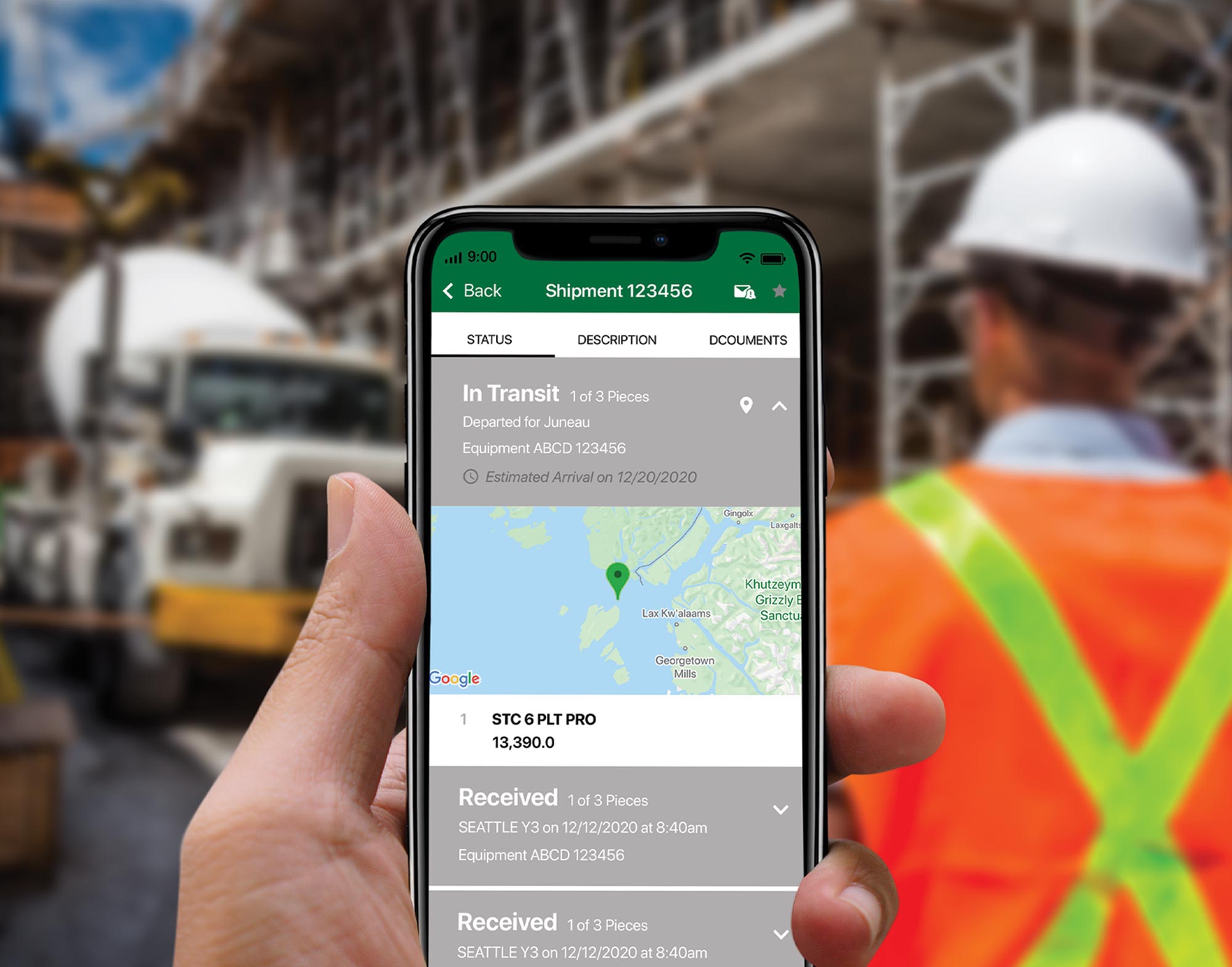
Plans Change.
Deadlines Don’t.
Track it from anywhere using Lynden’s mobile app, or choose to receive email updates as the status changes.



